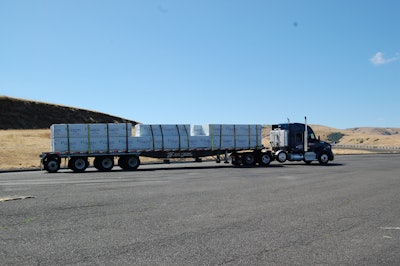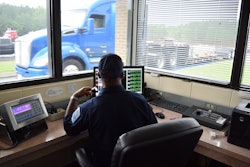We seem to have a fascination with speculating on the weight of trucks, which is surprising considering the actual weight of trucks is readily available.
Data for each truck and trailer is easy to determine by using the ubiquitous CAT Scales at many truck stops. Roadside weigh stations (those that are still staffed) weigh trucks for compliance and the number shows up for the driver.
Weigh-in-motion equipment imbedded in the pavement all over the U.S. is constantly capturing data. The latest equipment can sense the specific truck that is going over the sensor, how many axles it has (whether on the ground or lifted) and the individual axle and combined gross vehicle weight. Even load boards have a significant amount of estimated data if actual data is not of interest.

Yet amid this abundance of rich data, misinformation on vehicle weights persists. The tare weight of the truck is something rarely published by manufacturers, although it is likely a very big factor discussed during behind-the-door negotiations with fleets.
Fleets certainly know — or should know — the weights of their own trucks if for no other reason than billing and compliance reasons. Regulators should know the weight of the trucks driving on the roads to enforce regulations. Researchers, including the Federal Reserve Board, banks, investment firms, universities, technical centers, civil engineers, etc., all should reasonably expect to be working from actual weight data.
Yet speculation continues because it’s just easier to talk off the top of your head than to do the necessary homework. Often facts get in the way of pre-conceived conclusions, so opinion-based data is used. Often, it’s just information bias; "I know what I know and that’s all that matters." Other times still it’s just ignorance based on taking someone else’s opinion and giving it credibility.
Facts used to be factual, now they often are opinions disguised as facts. It doesn’t help that web search engines and AI tools are seemingly reinforcing that the most popular opinions are facts simply because they are popular.
Science is not averse to this trend that somehow a fact is based upon the number of people that believe something. Popular hypothesis often become accepted fact based upon how many seemingly independent experts have agreed on them. Popularity does not always convey truth. This is why new researchers are often branded as agitators and revolutionaries for questioning the status quo, upsetting the scientific apple cart.
There are many examples of this but one of the more famous ones is Galileo challenging the accepted theory that the universe revolved around Earth. The precept that the universe revolved around the Earth was postulated by none other than Aristotle, and had formed the basis of belief systems for centuries, so how could it be wrong? Fact and opinion often collide.
Discussing trucking weight seems to invariably highlight that many people believe all trucks operate at maximum weight all the time, and they all go long distances every day carrying that weight. NACFE has written a number of reports discussing real-world weights of trucks based on actual data. Still there is a fascination with surveying people about what they think weights are and then somehow giving that information factual status.
The U.S. Census Bureau has been working on a much overdue update to the Vehicle Inventory and Use Survey (VIUS), the last one having been issued in 2002. The 2002 information was used in countless reports to justify conclusions. The operative word is in the title: “survey.” It is a collection of opinions. Prior to now survey data was perhaps one of the few ways to get any information on vehicles. Now, in the Information Age, real data is instantly accessible on your smartphone. Look at any mapping program and you can see instantly where the accident is ahead of you and how much traffic is there. You can instantly get weather and air quality information. You can see where all the construction is.
Data on truck weight is as ubiquitous, it’s just not being tapped. Yet we persist in asking people what their trucks weigh. One of the constant pain points for fleets is that load board estimates of payload weight are notoriously incorrect. Since these estimates typically play into pricing, there is some incentive to underestimate the weight from the perspective of the shipper and overestimate the weight from the perspective of the carrier. Wouldn’t it be great if the numbers actually came from measured data?
Statistics often play a part in arguing that these opinion-based numbers are factual. An analysis of 100 weight estimates must mean it is statistically significant, right? Quantity does not mean accuracy. Just look at voting polls before and after an election, or stock estimates ahead of the bell to see that high numbers of opinions don’t necessarily translate to fact.
The weight of trucks seems like such an easy thing to get right. This is where the internet and social media could actually benefit by people posting and collecting weight tickets from actual, real-world trucks.
Knowing what the actual tare weight of the unladen truck and trailer is versus its loaded weight is just a matter of measuring it. Systems are out there doing that regularly. Perhaps someone could create an on-line repository of those. As The X-Files Agent Mulder so aptly stated, “The truth is out there.”











